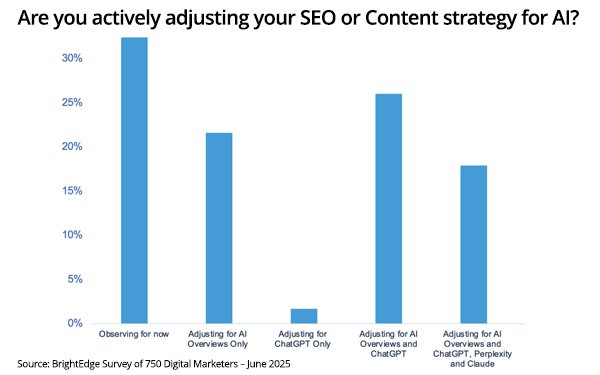A recent study conducted by Localogy and Duda sheds light on the nuanced perspectives small and medium-sized businesses (SMBs) hold regarding artificial intelligence (AI) as an integral part of their operational strategies. Despite the hype surrounding AI as a game-changing tool for SMB competitiveness, the reality reveals more skepticism than enthusiasm. The study, which surveyed 750 SMBs, unearthed that 43% of these enterprises perceive AI as likely to have no impact on their industries. Notably, only 29% held a positive view of AI technology, while a significant 23% expressed negative sentiments about its effectiveness in marketing and business management. Alarmingly, 46% of those with negative feelings regard AI as overhyped and doubt its potential to deliver effective results.
In stark contrast, when the term “AI” was replaced with “automation,” sentiment shifted considerably. The portion of SMBs unwilling to use automation tools decreased from 50% to 30%, highlighting a notable distinction in perception. It’s critical to analyze the strengths and weaknesses inherent in both AI and automation platforms to understand why this shift occurs and what it means for SMBs today.
Automation tools have historically been lauded for their ability to streamline processes and improve efficiency at lower costs. For instance, platforms like Make and Zapier offer substantial cost-benefit advantages for businesses looking to automate repetitive workflows. Make tends to stand out for its visual interface, enabling users to build automations without extensive coding knowledge, and often comes with a more accessible pricing structure for smaller businesses. Zapier, on the other hand, is renowned for its extensive library of integrations, facilitating connections between countless applications and services. However, it can become cost-prohibitive as automation needs scale and the number of tasks increases.
In terms of ROI, while automation platforms generally provide a straightforward return through saved time and reduced manual errors, AI tools are expected to deliver deeper analytics and improved decision-making capabilities. For instance, OpenAI’s platforms offer advanced natural language processing applications that can significantly enhance customer support and engagement by providing real-time insights and personalized interactions. However, these capabilities come with a steeper learning curve and implementation cost. Conversely, Anthropic, which focuses on building safer AI systems, may appeal to SMBs concerned about ethical considerations and operational reliability.
The combination of perceived complexity and high initial expenditures often deters SMBs from widely adopting AI technologies. While 60% of SMBs acknowledge the time and cost savings that AI can offer, their hesitance largely stems from apprehensions around accuracy, perceived overhype, and reliability, as noted in the survey. The figures clearly outline a sector struggling to align itself with the rapid pace of technological change. Interestingly, 70% of SMBs believe that agencies should integrate AI into their services, emphasizing a need for transitional support through training and consulting.
Notably, the changing landscape of search strategies under the influence of AI cannot be overlooked. BrightEdge research indicates that 68% of businesses are actively adapting their strategies in response to AI-driven changes in search, evolving from classic search engine optimization (SEO) to generative engine optimization (GEO). This evolution highlights the growing significance of specialized knowledge as companies grapple with new technologies and their implications on consumer behavior.
Nonetheless, successfully navigating this transformation requires cross-functional collaboration within organizations. Current data show that 54% of respondents are leaning on their SEO teams to spearhead AI search initiatives. While this may consolidate expertise, it can also risk isolating other equally critical departments. Moreover, the promise of AI creating substantial shifts appears tempered; only 5% of marketers report either extreme success or failure when using AI-powered tools. Such data suggests that while the push towards automation and AI is creating tangible shifts, it may not engender the radical disruptions often anticipated.
In conclusion, the interplay between AI and automation paints a complex picture for SMBs. These businesses possess valid concerns regarding the implications of technology on their operational efficiency and market competitiveness. Yet, as sentiment indicates that automation retains a more favorable connotation than AI, it becomes imperative to distinguish between the two. As SMB leaders evaluate their strategic road maps, they are encouraged to adopt a phased approach towards both technologies, ensuring that they leverage the measurable efficiencies of automation while cautiously integrating AI capabilities to enhance decision-making and customer engagement.
FlowMind AI Insight: As the technological landscape continues to evolve, SMB leaders must focus on empowering their teams through education and strategic partnerships to realize the full potential of both AI and automation. By fostering a culture of continuous learning and adaptation, businesses can not only survive but thrive in an increasingly competitive environment.
Original article: Read here
2025-06-30 07:00:00

